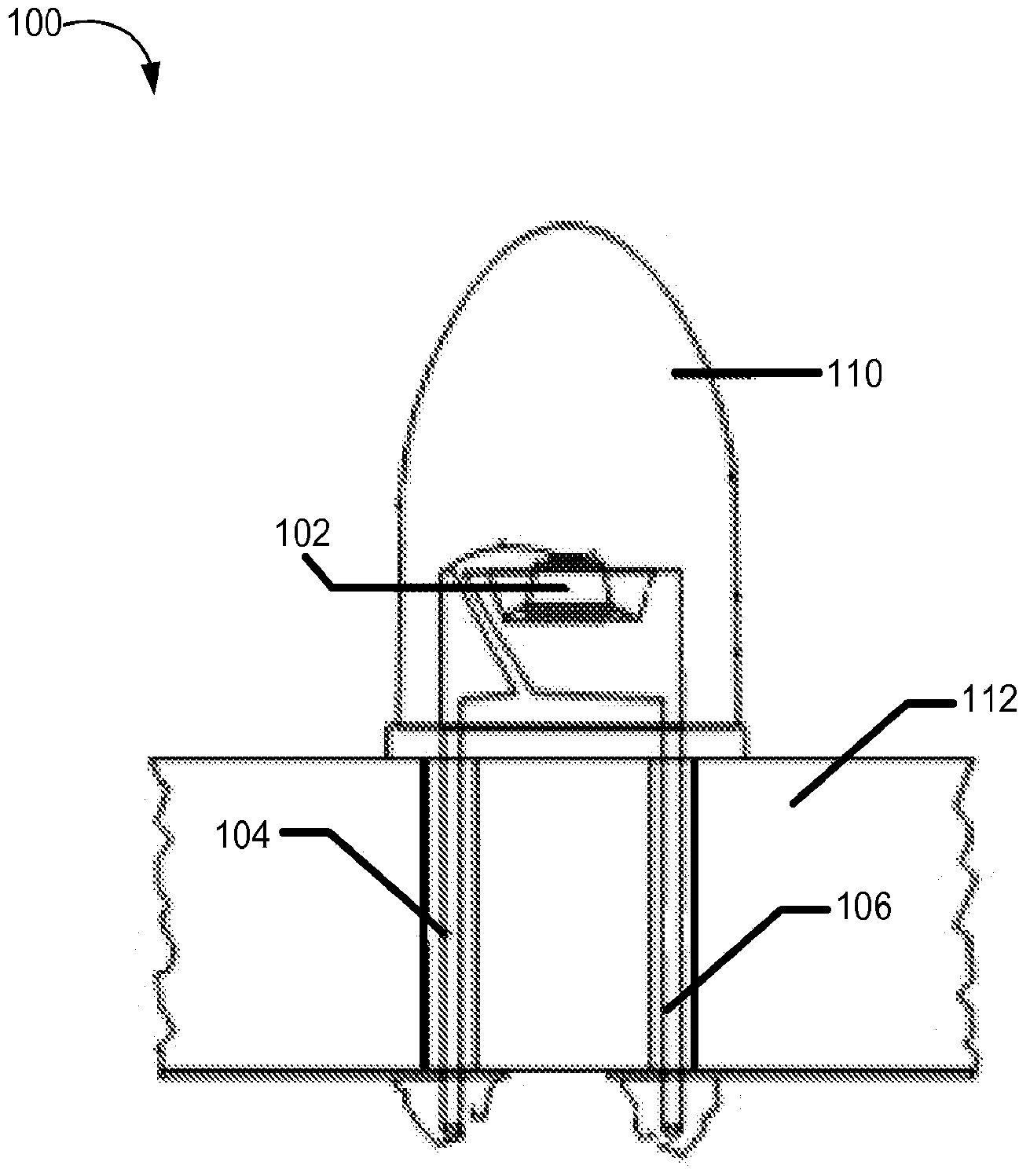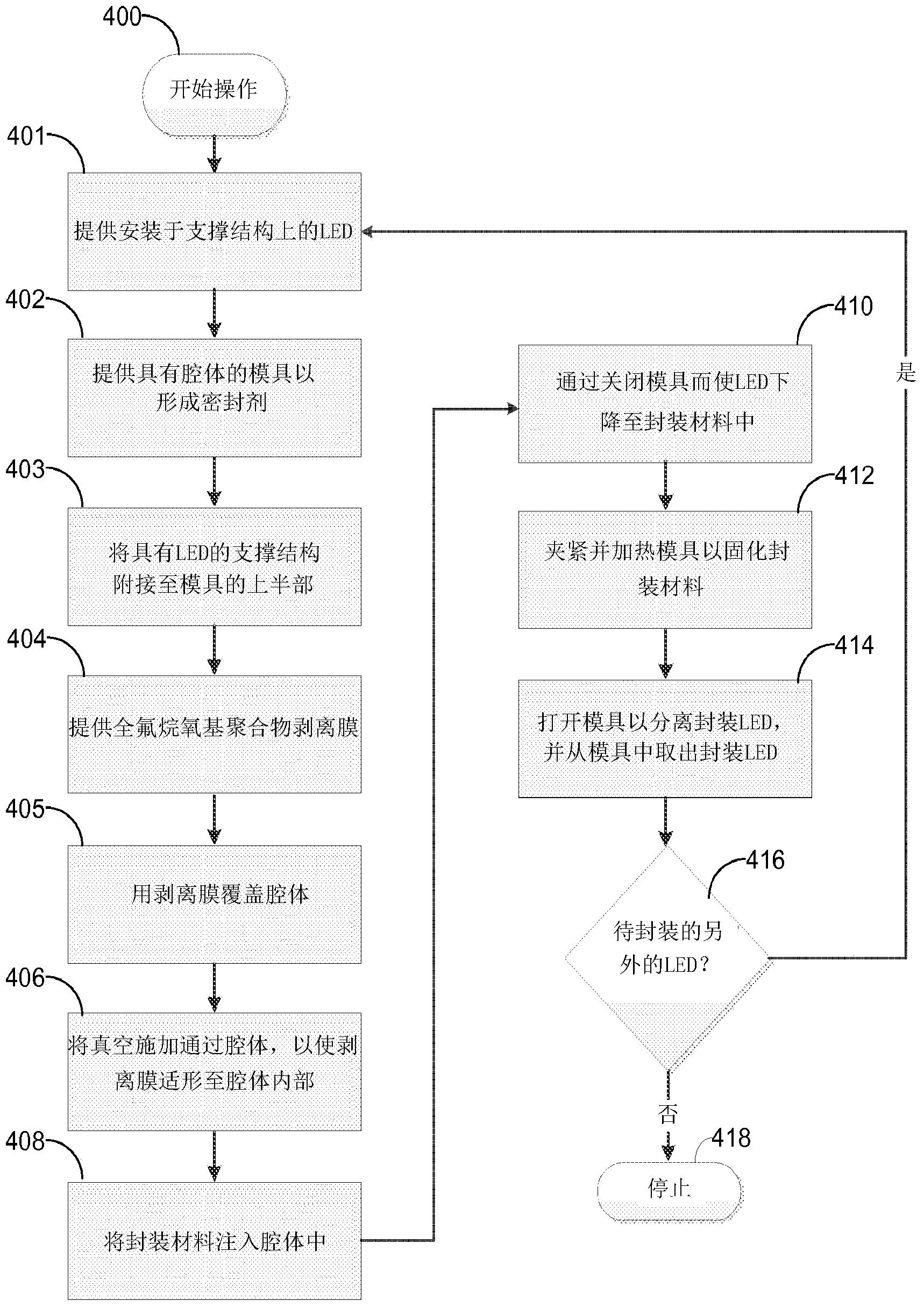Method of manufacturing light emitting device
A technology of light-emitting device and light-emitting element, applied in chemical instruments and methods, optical elements, transportation and packaging, etc.
- Summary
- Abstract
- Description
- Claims
- Application Information
AI Technical Summary
Problems solved by technology
Method used
Image
Examples
Embodiment Construction
[0015] The preferred embodiment of the present invention relates to a novel method for preparing a packaged light-emitting device. A typical manufacturing process for LED devices involves encapsulating the LED itself within a dome-shaped lens of epoxy or silicone. The encapsulation material (also known as potting material) not only protects the LED from damage caused by moisture, shock, etc., the encapsulation material must also adequately transmit the desired wavelength of light. The degree to which light is transmitted by the encapsulant (lens) is an important consideration in selecting an encapsulation material. Unfortunately, due to the refractive index of the material and the degree of total internal reflection, a certain amount of light generated by the LED chip is always trapped within the encapsulation material. The trapped light disadvantageously reduces or alters the light output of the LED device.
[0016] figure 2 A prior art method of forming an encapsulated L...
PUM
| Property | Measurement | Unit |
|---|---|---|
| elastic modulus | aaaaa | aaaaa |
| elastic modulus | aaaaa | aaaaa |
| elastic modulus | aaaaa | aaaaa |
Abstract
Description
Claims
Application Information
 Login to View More
Login to View More - R&D
- Intellectual Property
- Life Sciences
- Materials
- Tech Scout
- Unparalleled Data Quality
- Higher Quality Content
- 60% Fewer Hallucinations
Browse by: Latest US Patents, China's latest patents, Technical Efficacy Thesaurus, Application Domain, Technology Topic, Popular Technical Reports.
© 2025 PatSnap. All rights reserved.Legal|Privacy policy|Modern Slavery Act Transparency Statement|Sitemap|About US| Contact US: help@patsnap.com



